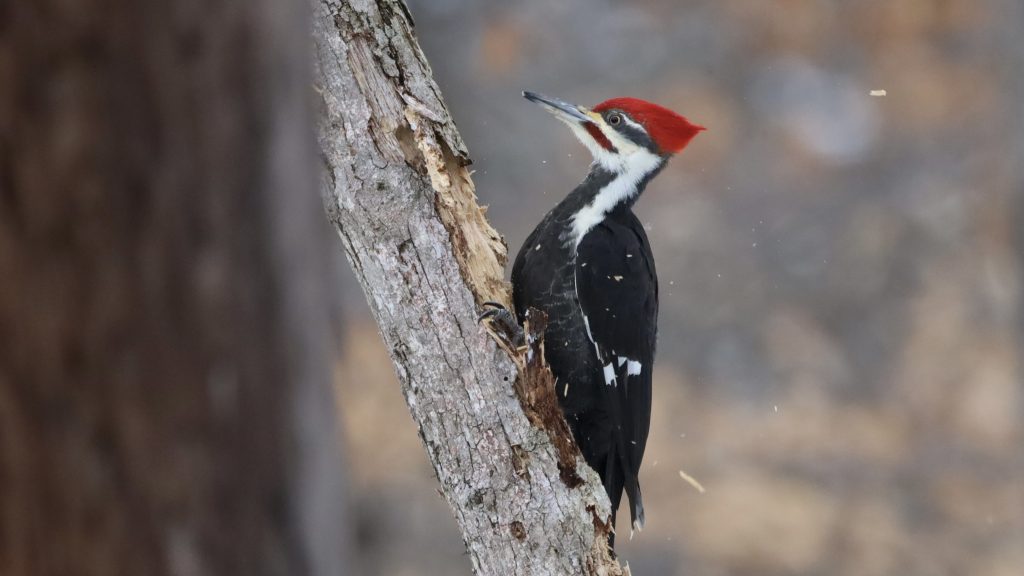The Great Backyard Bird Count (GBBC) is turning 25, offering nature lovers another chance to help local bird populations through a weekend of birdwatching.
The GBBC, which runs from February 18 to 21, is a joint project run by the Cornell Lab of Ornithology, the National Audubon Society and Birds Canada. The project has participants birdwatch for 15 minutes or more and report their sightings, which helps researchers track the health of bird populations in the months before spring migration. Kerrie Wilcox works with Birds Canada as the Canadian lead for Project FeederWatch, a survey where citizen scientists track bird sightings from November to April each year. Wilcox has been involved in the GBBC for about 10 years and said it’s great to see how the program has grown.
“It’s just amazing that this four-day weekend brings people together from around the world to share their love of birds,” Wilcox said. “From Canada, 43,000 checklists were submitted last year.”
Time at home during the pandemic has sparked an interest in backyard birds for many people, Wilcox said. Participation in Canada increased more than 100 per cent last year and more people took part in the GBBC than ever before with an estimated 300,000 participants worldwide.
A live map shows where people are entering checklists in real time, so birders can see people across the world reporting their sightings. This year’s event also includes a day-off for students, making it a great opportunity for some family fun.
“It’s a really fun program to get people started birding and participating in citizen science, so it’s one of those programs that’s great to do with families and kids,” Wilcox said. “Because in Canada it falls on Family Day, it’s a really great opportunity to get out with your family, do a little hike, count the birds that are near you, and so not only are you getting out and enjoying the great weather, you’re also helping birds as well.”
The Cornell Lab of Ornithology is hosting a webinar from 2 to 3 p.m. on Feb. 16 to offer tips for participating in the GBBC. The Huntsville Public Library is also hosting a guided walk with local naturalist Rick Stronks along Hunter’s Bay Trail at 10 a.m. on Feb. 19 to talk about the basics of birding in the winter.
Wilcox participated in the GBBC from her cottage in Parry Sound last year. She said it’s important to have as many people as possible participating across Canada, but that’s especially true for areas like Parry Sound and Muskoka with smaller populations.
“We don’t have as many people up there, so it’s fantastic to get as many checklists as we can to make sure that these areas get counted,” she said. “We’re finding out information about boreal birds and species that wouldn’t be in southern parts of the country.”
Though some people may be hesitant about their ability to identify birds, the GBBC offers tools to help birders of all skill and experience levels. Merlin Bird ID, a free smartphone app, allows users to input their locations and details about birds, including what the birds are doing and the main colours of their feathers. It then generates a list of five or so possibilities to help bird watchers select the correct species.
The Merlin app even has a photo ID feature where users can upload an image to help in identification. Another option is the free Audubon Bird Guide app, which has photos and recordings of over 800 North American bird species.
The GBBC has participants use the eBird app and website to report their sightings, so all you need to get involved is an internet or data connection and possibly a set of binoculars. Tracking the health of bird populations is important, Wilcox said, and the GBBC is a simple way that anyone can take action and help the environment.
“It’s a free, fun program that takes just 15 minutes, so people can participate on one day or they can participate on all four,” she said. “Even if people just enter one bird, it still helps us [with] tracking our birds and how our birds are doing.”
For more information on participating in the Great Backyard Bird Count, visit, birdcount.org.
